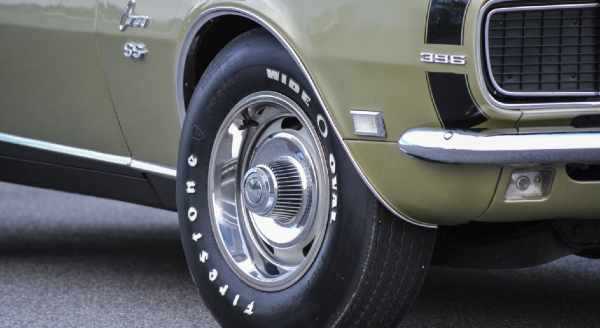Tires are essential to navigating your car. They are also extremely important to your vehicle`s safety. As the tires wear down, they will have less traction on the road, especially when it comes to wet conditions. There are actually several different types of wear that your tires can have. Each type will tell you something different about your car and the way you`re driving. This information can be useful to drivers, as it allows you to make changes that can make your tires last longer. Let’s learn about the different ways that car tires can get worn out.
1. Worn down the middle
Many tires have their wear and tear primarily down the centre, but not along the sides. This happens because the tires are overinflated. In an overinflated state, the tire will bulge often at the centre. Fortunately, it`s very easy to fix this issue if you see it happening.
To ensure your tires are not overinflated, use a tire gauge to ensure that the air in the tire matches its capacity. This information is usually printed on the tire itself. You can also find the info in the owner`s manual.
2. Flat spot wear
Flat spot wear appears usually when the car has been braked hard for some reason. Perhaps a person or an animal jumped in front of the car while it was going fast. Or perhaps the car in front of you stopped quickly, which required a quick reaction. Many unexpected occurrences can happen while driving, all of which may cause you to brake suddenly.
These fast brakes lock the tires in place, but the car doesn`t stop immediately. Instead, it skids. The skid wears down the tires in the spot they are locked in, causing a flat spot. However, this type of wear can still occur even if a sharp brake has not occurred. If you do notice this symptom on your tire, you might want to have it looked at by a mechanic.
3. Sidewall wear
This damage occurs on the side of the tire, which is not the part that actually touches the road. The wear-and-tear will occur when people park too close to the curb, allowing their tire to rub against it. Although doing this on accident once in a while isn`t a bad thing, sidewall wear is not ideal as it can negatively affect the structural integrity of the tire.
4. Wear on one side
If you notice that one side of your tire is wearing down faster than the other, it could mean that you need to have your tires aligned. Misaligned tires don`t allow for the tires to turn straight with the road, as would be ideal. Instead, they may be slightly crooked, which damages them more quickly in whichever area is favoured.
When you see this happening, just book an appointment to have your wheels aligned and it should fix the issue right up. If you notice it is still occurring after the wheel alignment, you may wish to contact your mechanic. They can check other parts that could be contributing to the strange wear and tear on your tires.
5. Wear on both sides
Just like wear in the middle is cause by overinflated tires, wear on both sides is caused by underinflated tires. There’s no reason to worry if one of your tires gets low and you don`t notice for a day or two. You won’t be in too much trouble. However, consistently underinflating your tires will cause this kind of wear over time. Use a tire gauge to ensure that the air in the tire matches the capacity as indicated on the tire.
6. Cupping wear
This is often seen in trailer tires, but can also be seen in cars too, especially when the shocks and struts are worn out or damaged. Cupping looks like random worn-out patches on the tires. This damage is caused by a bouncing motion on the road, which leads to the wear and tear in those specific spots.
There are other reasons why tires may have cupping wear. If you know for a fact that it’s not caused by the shocks or struts, then it might be a good idea to have a mechanic look into other potential causes.
7. Feathering
This is one of the only types of wear that is better felt than seen. To check your tires for feathering, just run your fingers along the tread. If one side of the tread feels worn out, but the other is still sharp and unworn, then your tire has the wearing pattern called feathering.
This tire wear can be managed with a simple wheel alignment. However, if your tires are already aligned, the damage could say more about your driving. Feathering usually occurs that you`re turning too fast, which causes the uneven wear.

